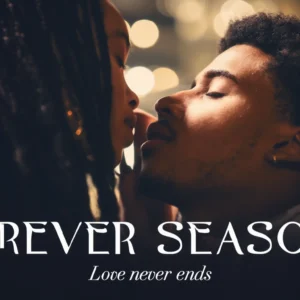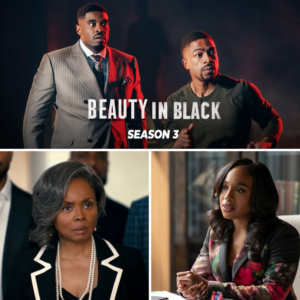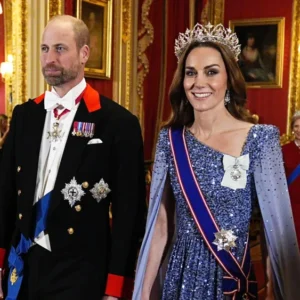As the 82nd Golden Globe Awards concluded on January 5, 2025, at the Beverly Hilton in Beverly Hills, a striking trend emerged that has reignited a long-standing debate about Hollywood’s treatment of women over 40. Jodie Foster and Nicole Kidman, both luminaries with decades of screen presence, stood at the forefront of this shift, their recent performances earning critical acclaim and awards. Foster’s fifth Golden Globe win for her role as Liz Danvers in True Detective: Night Country and Kidman’s nomination for Babygirl underscored a moment where older actresses are no longer sidelined but celebrated for portraying multifaceted characters. Yet, beneath the applause lies a question that lingers: Is Hollywood genuinely ready to recognize complex female characters over 40, or is this a fleeting trend masked by industry pressures and superficial changes?
For years, Hollywood has been criticized for relegating women past their 40s to predictable roles—supportive mothers, villainous hags, or fading romantic interests—while male counterparts enjoyed a broader range of complex narratives well into their later years. The narrative arc for women, as Goldie Hawn’s character quipped in The First Wives Club, often followed a grim progression: “babe, district attorney, and Driving Miss Daisy.” This stereotype began to crack with the rise of streaming platforms and shifting audience demands, particularly from millennials who crave authentic, diverse stories. The 2025 awards season, with its spotlight on women like Foster, Kidman, Demi Moore, and Jean Smart, suggests a cultural pivot. But is this evolution substantive, or merely a polished response to public scrutiny?
Foster’s portrayal of Danvers, a gritty Alaskan police chief grappling with personal demons and a haunting mystery, exemplifies the complexity now afforded to older actresses. At 62, her performance blended vulnerability with steely resolve, a departure from the one-dimensional roles she might have been offered decades ago. Similarly, Kidman, 57, took on the provocative role of a CEO entangled in a taboo affair with a younger intern in Babygirl, a character that defies the conventional notion of aging femininity. In her Palm Springs Film Festival acceptance speech, Kidman teared up, noting, “I’m so lucky to be given a role of that nature,” highlighting how such opportunities were once unthinkable for women her age. These roles challenge the industry’s historical bias, where women over 40 were often deemed past their prime, their stories reduced to nostalgia or irrelevance.
The Golden Globes 2025 amplified this shift, with actresses over 55 dominating key categories. Moore, 62, won Best Actress in a Musical or Comedy for The Substance, a bold exploration of aging and identity, while Smart, 73, continued her reign with Hacks. The red carpet buzzed with names like Viola Davis and Pamela Anderson, proving that age is no longer a barrier to leading roles. This surge aligns with a broader cultural readjustment, as evidenced by the success of shows like The White Lotus and films like Emilia Pérez, where older women drive narratives with depth and nuance. Critics argue this reflects a genuine demand for authenticity, with middle-aged writers and directors—often women—crafting stories that mirror their lived experiences.
Yet, skepticism persists. The industry’s history of tokenism raises doubts about the longevity of this trend. While Foster and Kidman’s wins are celebrated, the red-carpet commentary from figures like Helen Clutton noted a “depressing line-up of emaciated women with plastic faces,” suggesting that external pressures to conform to youthful ideals remain. This duality—complex roles paired with an obsession with appearance—hints at a superficial embrace rather than a deep cultural shift. Hollywood’s shift might also be pragmatic, driven by the need for content on streaming platforms, where proven talents like Kidman and Foster guarantee viewership, rather than a sincere commitment to age diversity.

Foster’s own reflections add layers to this debate. With nearly 60 years in the industry, she recalls an “entirely male environment” in the 1960s, where women were rarely more than supporting figures—mothers, sisters, or prostitutes. Her recent roles, including the flawed Bonnie Stoll in Nyad, showcase a rebellion against that legacy, offering characters with imperfections and agency. She told Sky News, “The world of complexity hasn’t always been reserved for women,” crediting decades of advocacy for this change. Kidman echoes this, having confronted ageism head-on at the 2018 SAG Awards, declaring, “How wonderful that our careers can go beyond 40 years old,” a sentiment that resonated as she navigated roles in Big Little Lies and beyond.
The rise of production companies led by women over 50—Kidman’s Blossom Films, Reese Witherspoon’s Hello Sunshine, and Salma Hayek’s ventures—further fuels this narrative. These entities prioritize scripts that center on mature female perspectives, challenging the male-dominated storytelling that once dominated Hollywood. The success of Babygirl, directed by Halina Reijn, and True Detective: Night Country, helmed by Issa López, underscores how female creatives are reshaping the landscape. However, the industry’s reliance on established stars rather than emerging talents over 40 suggests a selective inclusion, where only a handful of names reap the benefits.
Audience reception offers another lens. Social media buzz around the Globes praised Foster and Kidman’s performances, with fans noting, “Finally, women over 40 getting the roles they deserve.” Yet, the same platforms critique the lack of diversity beyond these icons, pointing to a glass ceiling for less-famous actresses. The Oscars 2025, looming on the horizon, will test whether this trend extends beyond the Globes’ glitz. Films like The Room Next Door with Julianne Moore and Tilda Swinton, both 64, and Hard Truths with Marianne Jean-Baptiste, 57, are in the conversation, but their nominations remain uncertain, hinting at persistent biases.
Historically, Hollywood’s shifts have often been reactive. The #MeToo movement and subsequent moral audits, exemplified by Frances McDormand’s 2018 Oscar speech urging female nominees to stand, pressured the industry to diversify. The current wave may be an extension of that momentum, amplified by economic incentives—older actresses bring box-office draw, as seen with The Substance’s global earnings. But economic motives can falter when trends wane, leaving the question of sustainability. Are studios investing in new stories, or recycling proven formulas with older faces?
The personal stakes for Foster and Kidman add depth. Foster’s journey, shaped by her mother’s fear of an early career end, reflects a defiance that resonates in her current work. Kidman’s loss of her mother in 2024 and her advocacy with UNWomen suggest a personal investment in narratives that empower. Their success challenges the notion that women over 40 lose relevance, yet the industry’s slow pace—decades to reach this point—indicates entrenched resistance. Critics like Jennifer Berry, a gender studies professor, argue for more “average-looking naked older bodies” on screen, pushing for authenticity beyond the polished images of Foster and Kidman.
As of 10:55 AM +07 on July 19, 2025, the conversation continues to evolve. The 2025 awards season has set a precedent, but its impact hinges on future casting and storytelling. Hollywood’s readiness to recognize complex female characters over 40 may hinge less on this moment’s triumphs and more on whether it fosters a pipeline for new voices. For now, Foster and Kidman stand as beacons, their intensity at the Globes—a moment dissected for friendship or rivalry—symbolizing a industry at a crossroads. The applause is loud, but the proof will be in the scripts that follow.




